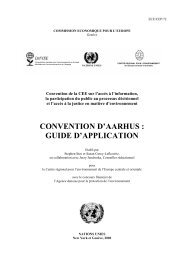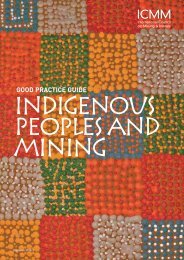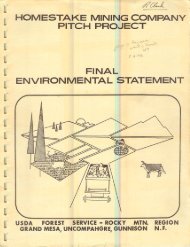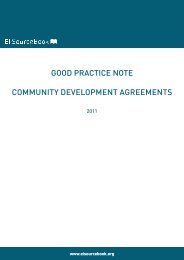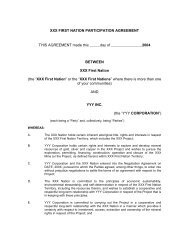Sharing Mining Benefits in Developing Countries - World Bank
Sharing Mining Benefits in Developing Countries - World Bank
Sharing Mining Benefits in Developing Countries - World Bank
Create successful ePaper yourself
Turn your PDF publications into a flip-book with our unique Google optimized e-Paper software.
Box 2.2: Government-Authored Benefit-<strong>Shar<strong>in</strong>g</strong> Schemes Us<strong>in</strong>gFTFs: The Cases of Madagascar and Senegal (cont<strong>in</strong>ued)The proposal also faced some opposition, as critics felt that the creationof the dedicated <strong>in</strong>strument would underm<strong>in</strong>e exist<strong>in</strong>g governance <strong>in</strong>stitutionsand the broader decentralization process. There was also fear that thestructure might allow payments to be captured by central elites and that itwas not sufficiently owned by local communities.Senegal. An alternative approach to a comparable situation was chosen<strong>in</strong> Senegal, where the 2003 m<strong>in</strong><strong>in</strong>g code stipulated that “part of the fi scalrevenues generated by m<strong>in</strong><strong>in</strong>g operations are paid <strong>in</strong>to a Balanc<strong>in</strong>g Fundto be allocated to local authorities.” However, detailed provisions were leftto subsequent regulations. After extensive consultation, Decree n 0 2009-1334 (November 20, 2009) clarified that 20 percent of m<strong>in</strong><strong>in</strong>g revenues(taxes and royalties) would be used to create a national equalization fund.The local authorities from the m<strong>in</strong><strong>in</strong>g region would receive 60 percentof the fund, with the rema<strong>in</strong><strong>in</strong>g 40 percent be<strong>in</strong>g shared by other localauthorities <strong>in</strong> the country. The funds are shared between m<strong>in</strong><strong>in</strong>g regions<strong>in</strong> amounts that are proportional to the revenues generated and the localpopulation.In parallel, the government negotiated a <strong>M<strong>in</strong><strong>in</strong>g</strong> Social Plan with companies,fi nanced by annual contributions from the companies as agreed <strong>in</strong> theirrespective m<strong>in</strong><strong>in</strong>g agreements. The m<strong>in</strong>istry <strong>in</strong> charge of m<strong>in</strong><strong>in</strong>g approvesand supervises the use of these resources. The fi rst <strong>M<strong>in</strong><strong>in</strong>g</strong> Social Plan isdedicated to the population liv<strong>in</strong>g <strong>in</strong> the areas around the operation of threecompanies: OROMIN Exploration Limited, M<strong>in</strong>eral Deposits Limited, andArcelor Mittal.The Special Case of Indigenous CommunitiesNegotiated agreements between <strong>in</strong>digenous peoples and m<strong>in</strong><strong>in</strong>g companieshave become commonplace <strong>in</strong> the past two decades <strong>in</strong> Australia andNorth America, where customary ownership has been formally recognized(ICMM 2010). Typically, the agreements cover f<strong>in</strong>ancial payments,disbursement arrangements, employment commitments, governancestructures, and other locally important provisions. The ICMM’s GoodPractice Guide on Indigenous Peoples and <strong>M<strong>in</strong><strong>in</strong>g</strong> (2010) provides additional<strong>in</strong>formation on this topic.16 <strong>Shar<strong>in</strong>g</strong> <strong>M<strong>in</strong><strong>in</strong>g</strong> <strong>Benefits</strong> <strong>in</strong> Develop<strong>in</strong>g <strong>Countries</strong>



